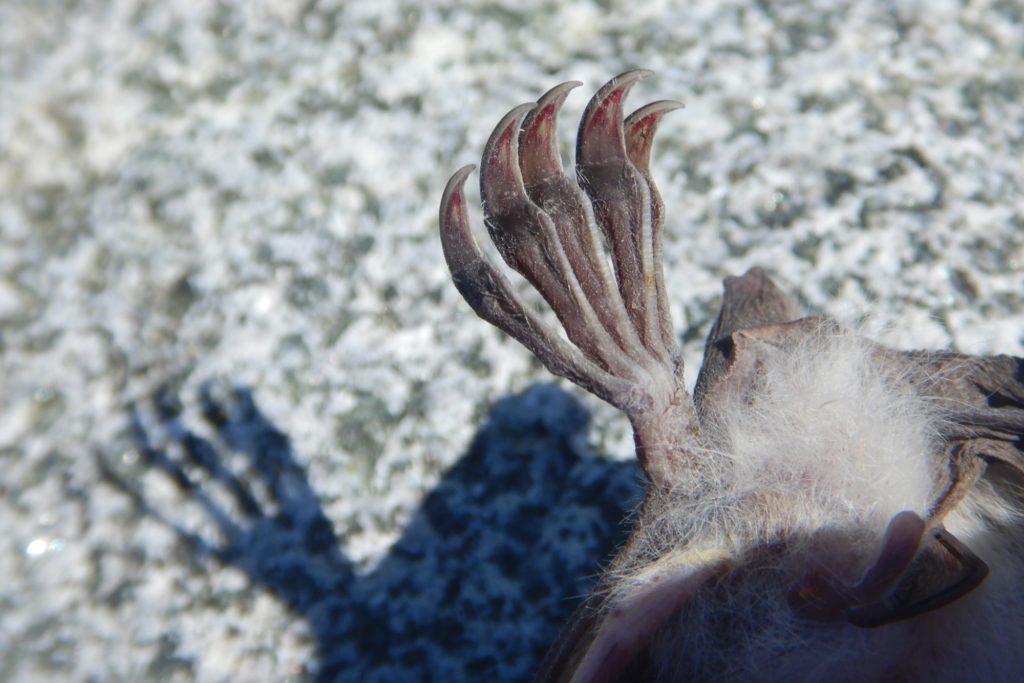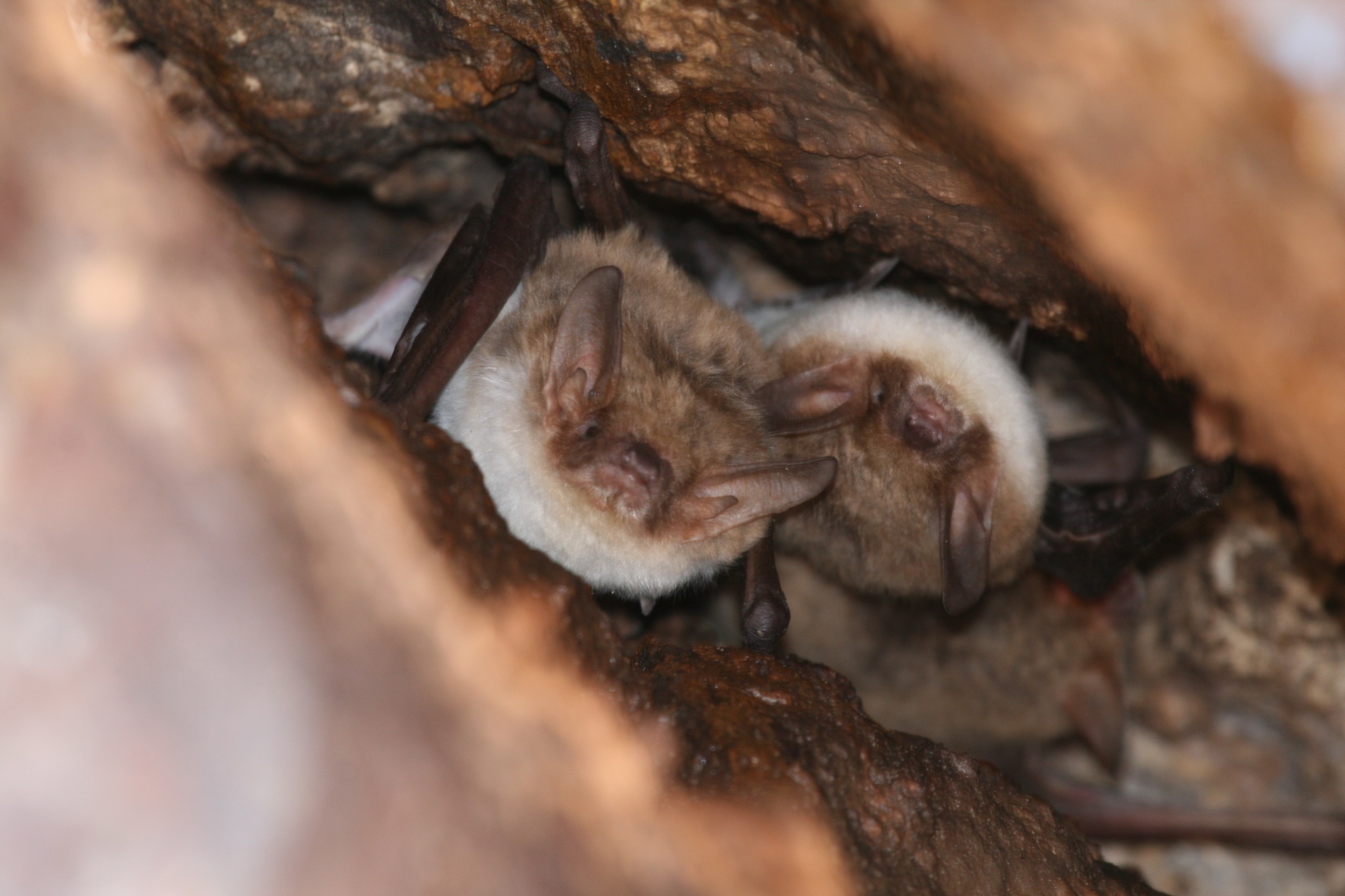Bats make up around one-fifth of all mammal species, so it shouldn’t come as a surprise that they’ve adapted to just about every ecological niche you could think of. Even so, I think Myotis vivesi is something special. These little guys subsist almost entirely on seafood that they catch during long fishing expeditions on the open ocean. They have huge claws to grasp fish with, and long, stable wings that allow them to glide efficiently and carry heavy prey. During the day, they roost among the rocks and cliffs of islands in the Gulf of California. Since their land home is quite dry and they spend so much time at sea, they can even get by only on seawater! Given these traits (which sound more like they belong to a seabird than a bat), it’s maybe not so surprising that they can fly up to 50km out to sea in a single evening.1 They’re even comfortable floating on the water.
The fish-eating bat is classified as Vulnerable by the IUCN due to its limited habitat, but fortunately the population seems to be stable, so these lovable weirdos should be able to keep doing their thing for the foreseeable future.

Header image: Myotis vivesi in a rock crevice on Isla San Ildefonso. Photo credit: Winifred Frick (CC BY-NC license).
